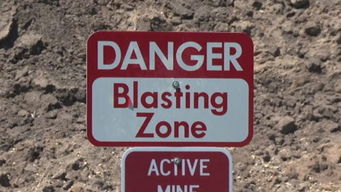What is Sand Mining?
Sand mining is an activity that involves extracting sand from various sources, such as rivers, lakes, and quarries. It is a process that has been around for centuries and is essential for various industries, including construction, glass manufacturing, and foundry. In this article, we will delve into the details of sand mining, its impact on the environment, and the different types of sand used in various applications.
Types of Sand Mining

There are two primary methods of sand mining: open-pit and dredging. Open-pit mining involves removing sand from the ground using excavation equipment, while dredging involves using a dredge to extract sand from bodies of water. Both methods have their advantages and disadvantages, and the choice of method depends on the location and type of sand being mined.
| Method | Description | Advantages | Disadvantages |
|---|---|---|---|
| Open-pit Mining | Removing sand from the ground using excavation equipment | Can be more efficient for large-scale operations | Can cause significant environmental damage |
| Dredging | Using a dredge to extract sand from bodies of water | Can be used in areas where open-pit mining is not possible | Can disrupt aquatic ecosystems and cause sedimentation |
Applications of Sand

Sand is a versatile material with a wide range of applications. Here are some of the most common uses of sand:
-
Construction: Sand is a key ingredient in concrete, which is used in the construction of buildings, roads, and bridges. It provides strength and stability to the structure.
-
Foundry: Sand is used in the foundry industry to create molds for metal casting. It is essential for the production of various metal products, including car parts and machinery.
-
Glass Manufacturing: Sand is the primary raw material used in glass manufacturing. It is melted and shaped into various products, such as windows, bottles, and mirrors.
-
Water Filtration: Sand is used in water filtration systems to remove impurities and contaminants from water. It is an effective and cost-effective method for purifying water.
Environmental Impact of Sand Mining

While sand mining is essential for various industries, it also has a significant impact on the environment. Here are some of the most notable environmental concerns associated with sand mining:
-
Water Pollution: Sand mining can lead to the pollution of water bodies, as sediment and chemicals from the mining process can enter the water supply.
-
Disruption of Ecosystems: Dredging can disrupt aquatic ecosystems, including fish populations and wetlands. This can have a long-term impact on the health of these ecosystems.
-
Land Degradation: Open-pit mining can lead to land degradation, as the mining process removes topsoil and vegetation. This can result in soil erosion and reduced land productivity.
Regulations and Sustainability
Many countries have implemented regulations to mitigate the environmental impact of sand mining. These regulations include obtaining permits, conducting environmental assessments, and implementing reclamation plans. Additionally, some companies are working towards sustainable sand mining practices, such as using less water and reducing the amount of sediment released into water bodies.
In conclusion, sand mining is an essential activity that provides raw materials for various industries. However, it is crucial to balance the economic benefits of sand mining with the environmental impact. By implementing regulations and adopting sustainable practices, we can ensure that sand mining is conducted responsibly and with minimal harm to the environment.
